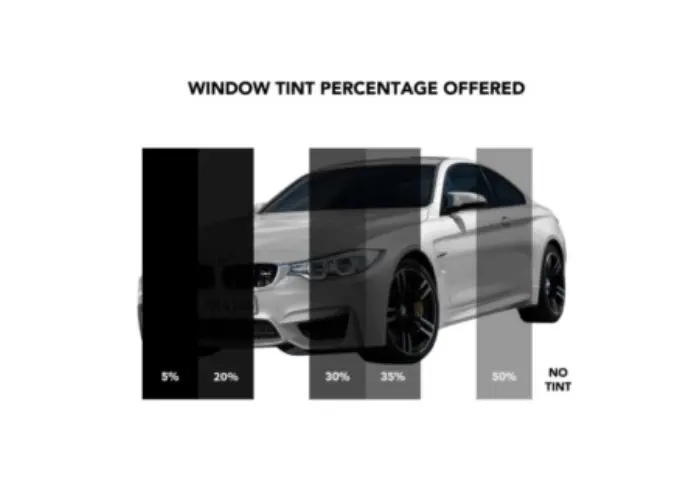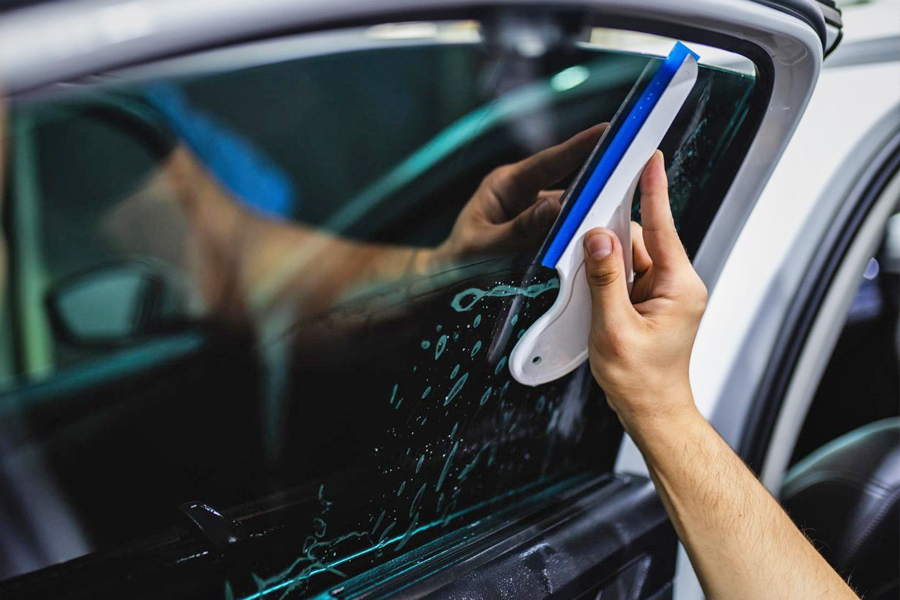Cost Effective Auto Window Tinting for every single Vehicle Type
Cost Effective Auto Window Tinting for every single Vehicle Type
Blog Article
Window Tinting Rules and Guidelines: What You Need to Know Prior To Tinting Your Automobile
Prior to continuing with window tinting for your car, it is important to familiarize on your own with the varied regulations and guidelines that govern this technique throughout various states. These regulations determine the acceptable levels of tint darkness, commonly gauged by noticeable light transmission (VLT) percentages, and include specific specifications for front windscreens focused on making certain road safety. Furthermore, certain jurisdictions may supply medical exceptions for people with certifying problems. Understanding these intricacies can save you from potential lawful ramifications, however what are the details guidelines in your state?
Summary of Window Tinting Laws
Home window tinting regulations are frequently based on variant across various jurisdictions, showing regional policies and security considerations. These legislations dictate the permitted degrees of color darkness and reflectiveness on vehicle home windows, making sure that drivers preserve ample visibility while likewise securing against harmful UV rays and heat.
The majority of regulations categorize home window tinting based on the Visible Light Transmission (VLT) percent, which shows the amount of light that can go through the window. Normally, reduced VLT portions symbolize darker tints. Laws typically distinguish between the front, side, and rear home windows, with more stringent limitations put on the front windshield to boost safety for both the motorist and various other road users.
Additionally, some jurisdictions impose limitations on the reflectivity of the color, avoiding too much glare that can hinder exposure. Exemptions to these legislations might exist for people with details medical problems calling for added sunlight protection. Conformity with home window tinting laws is important, as violations can lead to penalties, mandatory elimination of the color, and prospective rises in insurance coverage costs. It is necessary for automobile proprietors to acquaint themselves with local legislations prior to proceeding with window tinting installations.
State-by-State Tint Rules
Recognizing the certain home window tinting laws in each state is important for automobile proprietors seeking to abide by the law. Each state in the U.S. has actually established its very own collection of regulations regulating home window tinting, which can differ considerably. These guidelines commonly dictate the allowable levels of color darkness, the kinds of windows that can be tinted, and any medical exemptions that may use.
For example, states like The golden state have stringent constraints on tint darkness for front windows, while others, such as New Mexico, might permit darker tints. Furthermore, particular states mandate particular visibility percentages for different windows, consisting of the windshield, front side windows, and back home windows. It is crucial for auto owners to familiarize themselves with their state's laws to stay clear of prospective penalties or fines.
In addition, some states might require a qualification sticker to be put on colored home windows, indicating conformity with state laws. Failing to abide by these policies not just risks legal repercussions but can additionally influence safety and security and exposure while driving. Consequently, vehicle owners must perform detailed research study or get in touch with local authorities to make certain full understanding and conformity with state-by-state color guidelines.
Allowed Color Kinds and levels
Numerous car owners may be amazed to learn that enabled tint degrees and types vary widely throughout different states. Each state has actually established its very own laws concerning the permitted darkness and reflectivity of window color, commonly measured by Visible Light Transmission (VLT) percentages. VLT describes the amount of light that can pass via the colored windows; therefore, a reduced percent indicates a darker tint.

Moreover, the sorts of tint products permitted can vary, with some states restricting metallic or mirror-like surfaces. It is crucial for vehicle owners to familiarize themselves with their state's particular laws to make certain compliance. Non-compliance can result in fines, required elimination of the color, or various other legal consequences, making it crucial to understand these guidelines before continuing with setup.
Medical Exemptions for Tinting
While not all states provide allocations for clinical exceptions pertaining to home window tinting, those that do acknowledge the necessity for details individuals to improve visibility and comfort as a result of medical conditions. Different medical conditions, such as lupus, skin cancer, and certain eye disorders, can render individuals particularly conscious sunshine. These individuals might require darker tints to secure themselves from damaging UV rays and glare.

It is essential to keep in mind that despite having a medical exemption, there may still be limitations on the degree of color enabled. Conformity with state regulations makes certain that individuals are both secured and within legal limitations. Those considering clinical exemptions ought to call their local Department of Electric motor Autos or equivalent authority to comprehend the requirements and procedures required to make an application for an exception properly.
Penalties for Non-Compliance
Stopping working to adhere to window tinting regulations can cause significant fines, which differ by state. Police are empowered to provide citations for lorries that do not stick to the specified tinting laws. These fines typically consist of penalties, which can range from modest total up to a number of hundred bucks, depending navigate to these guys upon the severity of the violation and the state in inquiry.
In some jurisdictions, repeated offenses might cause escalating penalties or additional penalties, such as compulsory court looks. Non-compliance might necessitate the removal of unlawful tinting, frequently at the owner's cost. In severe instances, habitual offenders may deal with suspension of their car registration up until compliance is achieved.
Additionally, insurance coverage implications may arise from receiving multiple citations for home window tint violations. Insurers may see such offenses as a sign of riskier behavior, possibly resulting in enhanced premiums or difficulty in coverage.
To avoid these penalties, it is essential for automobile proprietors to acquaint themselves with their local home window tinting legislations and make certain that their vehicle complies (Window Tinting). This proactive approach not just prevents lawful ramifications yet additionally promotes road safety
Conclusion

Most laws categorize window tinting based on the Visible Light Transmission (VLT) percent, which suggests the amount of light that can pass with the home window. Compliance with window tinting laws is critical, as offenses can result in fines, necessary elimination of the tint, and prospective rises in insurance coverage costs.Recognizing the particular home window tinting policies in each state is crucial for vehicle proprietors looking for to comply with the legislation. These laws commonly dictate the permitted levels of color darkness, the kinds of windows that can be tinted, and any type of medical exceptions that might apply.
For instance, states like California have rigorous restrictions on tint darkness for front windows, while others, such as New Mexico, might permit darker tints.
Report this page